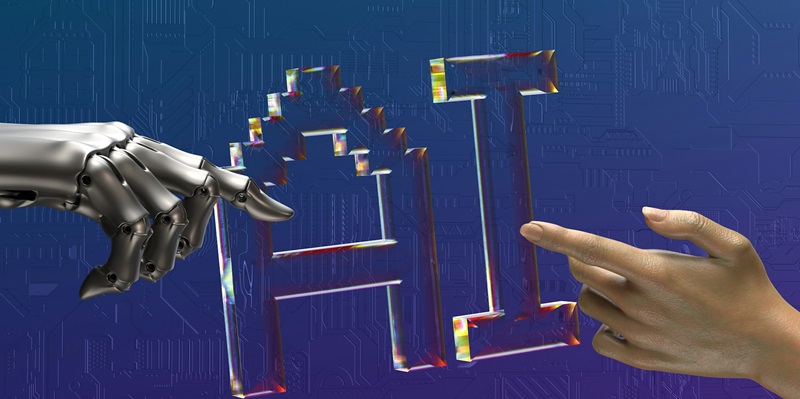Generative AI technologies such as OpenAI’s ChatGPT have revolutionized how enterprises conduct business, unlocking new avenues for productivity and innovation. However, as AI weaves its intricate threads through the tapestry of enterprise operations, it brings along a host of cybersecurity challenges that demand immediate and strategic attention. As the adoption of generative AI tools in enterprise environments surges dramatically, it is imperative that the potential for these technologies to transform business outcomes is balanced against the risks they pose. This article delves into the acceleration of generative AI adoption within enterprises and the corresponding cybersecurity challenges this presents, emphasizing the need for a proactive approach to maintain a harmonious equilibrium between the fruits of AI innovation and its cybersecurity implications.
Exploring the Surge in Generative AI Usage
The corporate world has seen an unprecedented acceleration in the integration of generative AI, with usage intensifying by over a staggering 100% in mere months. This uptick is not a mere flash in the pan; it signifies a deeper commitment to AI as evidenced by the 64% increase in power users. Such a monumental shift underscores an urgent call for businesses to re-evaluate and intensify their cybersecurity efforts. An 80% spike in file uploads to AI platforms has emerged as a stark warning sign; sensitive data is potentially at risk like never before. Addressing these vulnerabilities is no longer elective but pivotal to the continued viability and security of enterprise operations.
The cyberspace that enterprises navigate today is fraught with unanticipated risks stemming from their reliance on generative AI. With the increase in data interfacing with AI platforms, traditional security measures are being outpaced by sophisticated cyber threats. Phishing attacks, bolstered by the astuteness of AI, represent a looming threat that demands resilient real-time countermeasures. In this climate, the security landscape must be as dynamic as the technology it aims to safeguard.
Addressing Cybersecurity Threats
In today’s digital age, the surge of generative AI is a double-edged sword. Its potential for innovation is matched by the ease with which cybercriminals can exploit it to enhance their malicious schemes. Traditional, narrowly focused security measures are becoming increasingly ineffective against sophisticated AI-driven threats. Businesses are challenged to overhaul their cybersecurity strategies, shifting from a reactive to a proactive stance to preemptively counter evolving risks.
As AI technologies advance, security protocols must evolve at the same pace to effectively thwart real-time phishing and other advanced threats. A broad, anticipatory approach to cybersecurity is no longer a luxury but a fundamental requirement. Enterprises must adopt comprehensive and agile defenses to protect against the dynamic and unpredictable nature of AI-augmented cyberattacks. This calls for a rethinking of cybersecurity methodology to stay aligned with the evolving digital threat landscape.
Evolution and Integration of Generative AI
The breakthrough of OpenAI’s GPT-1 in June 2018 was the harbinger of the AI renaissance that has since swept through enterprises, fundamentally altering their operational DNA. Google Brain’s PaLM, OpenAI’s DALL-E, and the increasingly popular ChatGPT are testaments to the journey from AI curiosity to business staple. This trajectory mirrors the past technological inflection points—the cloud, mobility, and the internet—each demanding an evolution in concurrent security protocols. Generative AI’s burgeoning role in enterprises is indicative of a maturing technology that commands a revised, forward-looking cybersecurity approach to harness its potential while curtailing the associated risks.
The perennial game of catch-up that security strategies play with technology advances has a new contender: generative AI. Like the paradigm shifts brought about by earlier tech waves, the rapid integration of AI into enterprise workflows necessitates a proactive approach to cybersecurity. The adaptability and responsiveness of these strategies will determine how well businesses can protect themselves in a digital landscape that has become both more powerful and more precarious with the introduction of generative AI.
Crafting a Multi-Layered Defense Strategy
Faced with the dynamic nature of generative AI, businesses must architect a multi-faceted defense strategy. Imposing copy and paste limitations, rigorous session monitoring, and setting comprehensive policies across generative AI platforms are foundational to minimizing risks. These strategies must evolve to match the sophistication of the potential threats, creating a secure environment that allows businesses to leverage AI without succumbing to its vulnerabilities.
Robust cybersecurity is about more than just defense—it’s about enabling safe exploration and exploitation of AI capabilities. An intricate balance of security measures that guard against data breaches while fostering AI-driven innovation is the new imperative. As AI continues to disrupt the status quo, businesses must be vigilant, adopting a multipronged and adaptable approach to cybersecurity that accounts for the ever-evolving threats in the digital ecosystem.
Proactive Security in the Age of AI
Incorporating generative AI into daily business operations isn’t just a passing phase; it’s become integral to the modern corporate landscape, presenting a pressing need for agile and robust cybersecurity measures. Traditional security measures cannot keep pace with the rapid advancements in AI, prompting organizations to act swiftly to secure these technologies.
Companies must weave the benefits of generative AI into their fabric without falling prey to its potential risks. As AI takes a central role in efficiency and strategic choices, enterprises must find a new equilibrium—prioritizing innovation but with an unwavering shield against cyber dangers. The new imperative is to establish a security infrastructure that is durable and capable of adapting to emerging threats, keeping AI a beneficial tool in the realm of enterprise technology.

